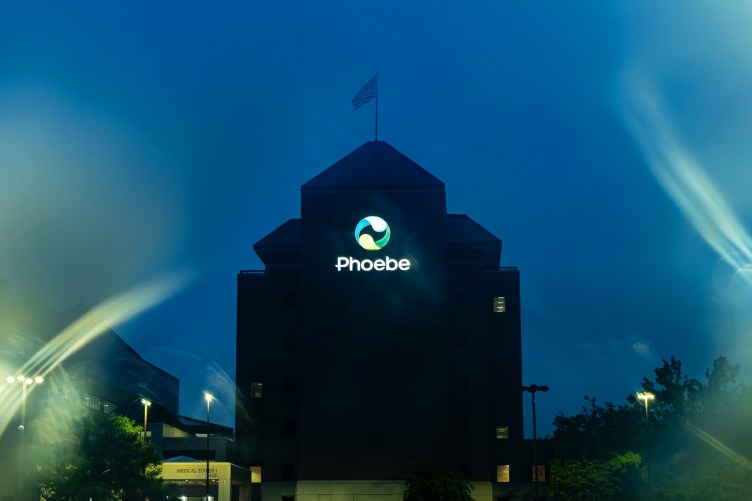In early January, we at ProPublica Illinois decided to make explaining our jobs part of our jobs. We asked you to send us questions about how journalism works — and since then we’ve been chipping away at answering those questions in our ongoing series, Ask ProPublica Illinois.
With five answered questions under our belt — and dozens more waiting to be answered — we thought it’d be a good time to recap what we’ve done so far.
But before we get into that, I’d like to point out something I’ve noticed about the questions we’ve already answered: These are questions we, as journalists, are constantly asking ourselves. Sure, the principles behind these questions — don’t get too chummy with sources, don’t be biased, don’t report false information — have been drilled into us since journalism school or however else we came to the profession. But the lived, experiential versions of these questions are evolving backdrops to our everyday professional lives, and they spark many newsroom conversations. Our answers aren’t static either; they are often ongoing conversations. For this reason, there’s value in bringing those conversations into a public space, and I’m heartened to see how often your questions parallel the questions our newsroom asks of itself.
OK, here’s what we’ve got so far.
How do we balance the relationship between reporters and sources?
This is a timeless question that journalists in our newsroom are constantly aware of. Deputy Editor Steve Mills lays out a spectrum of possible journalist/source relationships and specifics to consider with each. The fundamentals? Reporters shouldn’t lie to sources. Reporters shouldn’t give advice to sources. Reporters and editors — not sources — decide what a story is and when it’s ready to publish. Which brings us to another question …
When is a story ready to publish?
This is a question about how we, as an investigative journalism shop, balance the need to thoroughly investigate a story and the need to get it published while it’s still news. ProPublica Illinois reporter Melissa Sanchez answers using the example of a story she was working on at the time: How Chicago Ticket Debt Sends Black Motorists Into Bankruptcy. The short — if unsexy — answer? Deadlines and a solid production plan; mastering the topic you’re reporting on so you can best understand what can be shorter, timelier pieces versus a longer investigation; and balancing the reporting and publication schedule to reflect that balance.
How do we keep bias out of stories?
Ah, we could write a textbook about this. But reporter Jason Grotto boils it down to this: “Every reporter should seek out facts that might produce a counternarrative.” Jason writes about his own mantra in making sure his stories don’t have slants: “No surprises … Anyone mentioned in the story should know before publication what the story will say and have a chance to respond — not only to specific facts but also to how the story is framed.” You should definitely take notes on this one. Read it.
How do you identify fake news?
Obviously a relevant topic right now (and maybe why this particular answer was picked up by the Boise Weekly, The Courier from the College of DuPage, Salt Lake City’s KSL.com, Poynter and The American Press Institute). There are lots of good answers and resources to this question, including this handy infographic from the International Federation of Library Associations, these “Teachable Moments” from The News Literacy Project, and from fact-checking websites like PolitiFact. ProPublica Illinois web producer Vignesh Ramachandran spoke with Dan Gillmor, a professor at Arizona State University’s Walter Cronkite School of Journalism and Mass Communication, and Craig Silverman, media editor at BuzzFeed News. Both advised that identifying fake news involves a healthy level of skepticism — both intellectually and emotionally. “False news is also often twisted to present a story that triggers you emotionally, whether that’s anger or sadness, Silverman said. “If they can do that, then the chances of you reacting to it by liking it or retweeting it are much greater.”
How do young journalists get their training?
At ProPublica Illinois, we’re lucky to be working with two young journalists, Natalie Escobar and Andrea Salcedo, as part of ProPublica’s Emerging Reporters initiative. Today, there are lots of great avenues for young journalists to get training. In Chicago alone, there’s City Bureau’s fellows program, Free Spirit Media, and projects such as Young Chicago Authors’ The Chicago Beat. In this piece, Natalie writes about her experience as a journalism student at Northwestern’s Medill School of Journalism and the ever-present fear of the “Medill F.”
Now, some questions for you: Is this helpful? Are you using our answers to these questions in some way — maybe in a class you teach, or as a journalist yourself? We’d love to hear your feedback on this series. You can email us at [email protected]. And, again, if you have a question that comes to mind about how journalism works and how we do our jobs, don’t hesitate to ask.
Enjoy your weekend. And thanks for reading.
Logan Jaffe
Engagement reporter, ProPublica Illinois











